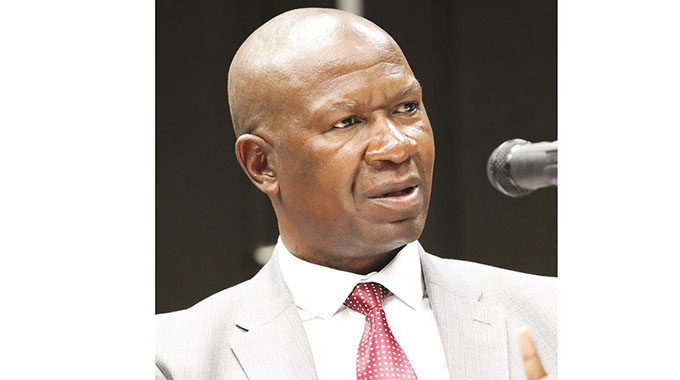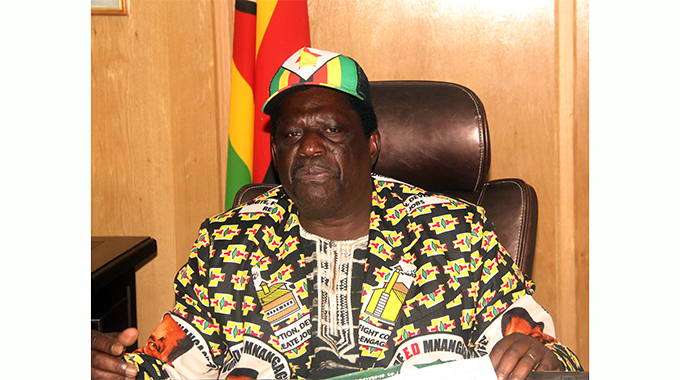ZDF denies shooting civilians

Tendai Mugabe and Felex Share
The Zimbabwe Defence Forces did not kill any civilian during an operation aimed at restoring order in Harare’s central business district following violent demonstrations that resulted in the death of six people and damage to property on August 1, it has emerged.
The military intervened as the National Reaction Force comprising officers from various security units and the deployment followed consultations at the highest level, the commission of inquiry into the August 1 violence heard yesterday.
Further, the intervention was at the request of the Zimbabwe Republic Police and the only shots fired by members of the National Reaction Force were warning shots against the rioters.

Comm-Gen Matanga
Testifying before the commission, Commander of the Zimbabwe Defence Forces General Phillip Valerio Sibanda said their troops had clear instructions not to open fire against the rioters.
“Firstly, as soldiers, we operate on orders and the orders given on that day were very clear – you don’t open fire on the rioters,” he said.
“If there is anyone with evidence to the effect that anyone of these (killed) six and the injured could have been shot by soldiers, they can bring that forward. I am aware that there were reporters who were following the troops when they were deployed in town. Certainly from where I sit, I do not believe that any of the soldiers fired. Yes, they fired in the air but I do not believe any could have aimed shots at the civilians.
“We would have been very foolish as the Defence Forces to give orders to the troops to open fire on the civilians with all these people (election observers and foreign journalists) in the country. We would have been out of our minds to give such an order.”
Forty-six countries, 15 regional and continental bodies were invited to observe the July 30 harmonised elections as President Mnangagwa’s administration made good on its pledge for transparent, free and fair elections.
Gen Sibanda said if the troops had opened fire on the rioters, many could have died.
Said Gen Sibanda: “The troops were given orders to advance and not to take kneeling positions. Whilst that fellow was opening fire, he must have been warning the rioters because if he had aimed at them, we could have more deaths in that area,” Gen Sibanda said in reference to a widely circulated video clip that showed a soldier in a kneeling position.
He said the force applied by the National Reaction Force was commensurate with the prevailing situation in Harare’s CBD.

General Sibanda
“When we do an estimate of a situation, you look at how best you can deal with the situation in the shortest possible time and in this particular case with minimum force, damage and loss of life. We looked at that and we believed that the force that was eventually deployed by the commander of the National Reaction Force was appropriate and the weaponry was appropriate in the sense that you cannot deploy a soldier without his equipment,” he said.
“It might not have been appropriate in the sense that they were carrying an AK47 as opposed to maybe a weapon that can take rubber bullets. But otherwise, the force that was used and so on was appropriate in my view because as you notice it was only one and half hours and the city was also back to normal except that there were no people because of what had happened.”
Gen Sibanda said some soldiers were pummelled by the rioters using stones and other missiles but that was not enough justification to open fire against the rioters.
Appearing before the same commission, the tactical commander of the National Reaction Force, who is also Presidential Guard Commander Brigadier-General Anselem Sanyatwe, said: “The NRF participants had very clear rules of engagement. They can only use a firearm when it is extremely necessary. If a firearm was to be used, there are standard procedures that we do practise during our training on crowd dispersing. That you fire warning shots into the air three times. If the situation continues you fire well-calculated rapid warning shots and these are exactly the drills that were employed by the troops at NetOne Building.”
Asked about a picture that trended on social media of a soldier who appeared to be firing at the rioters, Brig-Gen Sanyatwe said the trooper took a kneeling position to avoid being hit by missiles that were being thrown at him by MDC Alliance supporters.
“He took that position because he was avoiding missiles that were being thrown at him,” he said.
“But because of the instructions that warning shots are only to be fired in a standing position this is where the second-in-command of that particular platoon observed this and said, ‘Stand up, don’t worry about those stones, they won’t kill you. In fact, he took remedial action.”
Brig-Gen Sanyatwe said the mutinous behaviour displayed by the MDC Alliance supporters vindicated intelligence reports that security forces all along heard that the opposition outfit had a militant grouping, the Vanguard.
“These militant groups according to the intelligence that we have are basically members who could have deserted from the army and other institutions because they were advancing, braving even warning shots in the air. That behaviour is a characteristic of a really trained member of the society and not a civilian man.”
He narrated to the commission the circumstances that led to the deployment of the NRF, all the routes it used and how it executed the operation.
Brig-Gen Sanyatwe dismissed some of the alleged witness accounts alleging that there were soldiers firing at people from a moving vehicle.
He said soldiers do not fire from moving vehicles and in cases where the military was deployed to open live fire, no one could brave that and stand as witnesses including even members of the commission.
Police Commissioner-General Godwin Matanga said he sought the assistance of the defence forces as there were manpower shortages in the police forces.
He said about 70 000 police officers, including special constabularies, had been deployed at the 10 895 polling stations established during the harmonised elections.
Comm-Gen Matanga said the MDC Alliance were setting vehicles on fire, damaging property and blocking roads, bringing business to a halt in the process.
“There was chaos in the CBD and the police had been overwhelmed by the increasing number of demonstrators in relation to their manpower levels,” he said.
“We deployed not less than five police officers at every polling station in the country and we even ended up augmenting ourselves with 21 000 special constabularies. Given the deteriorating situation in the Harare CBD and shortage of manpower to contain the situation, I then sought assistance from the ZDF to quell the violence. The demonstrators were trying to burn some filling stations, torching buses, cars and buildings and from the intelligence I had from officers on the ground it was very clear that at the end of the day, these demonstrators wanted to end up in the State House.”
He said faced with such a scenario, he approached the then Home Affairs Minister Dr Obert Mpofu.
“When the situation had gone out of hand I alerted my then minister that there was no time to meet and discuss the situation,” Comm-Gen Matanga said.
“It was now time for action. Having alerted my minister, he then also asked for assistance from his counterpart, Minister of Defence and War Veterans in the name of Vice President Constantino Chiwenga. Within a short space of time consultations were made. My minister called back and said the permission to invite the defence forces had been granted and my minister asked me to get in touch with the Commander Defence Forces in the name of General Philip Valerio Sibanda, who in turn advised me to directly discuss the nitty-gritties of the operation with Zimbabwe National Army Commander Lieutenant-General Edzai Chimonyo. Of course, with a little bit of caution, ladies and gentlemen, there was no space for discussions.”
In asking for reinforcements, Police invoked Section 37(1) of the Public Order and Security Act, which proposes how the defence forces could assist the law enforcement agents under the Act.








Comments